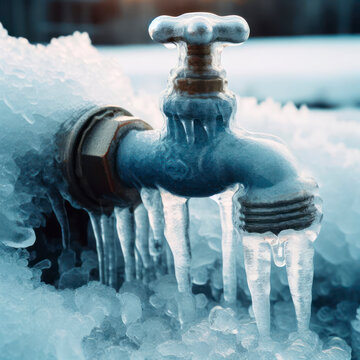Tips to Safeguard Your Plumbing from Freezing: Essential Strategies
Tips to Safeguard Your Plumbing from Freezing: Essential Strategies
Blog Article
Presented here in the next paragraphs you can find lots of quality insights all about 6 Ways to Prevent Frozen Pipes.

Winter can damage your pipes, especially by freezing pipelines. Here's just how to prevent it from occurring and what to do if it does.
Intro
As temperatures decrease, the risk of frozen pipes boosts, potentially causing pricey repair services and water damages. Understanding exactly how to prevent frozen pipelines is essential for house owners in cold climates.
Prevention Tips
Shielding vulnerable pipes
Wrap pipelines in insulation sleeves or use warm tape to protect them from freezing temperatures. Concentrate on pipes in unheated or exterior areas of the home.
Heating strategies
Keep interior spaces sufficiently heated up, especially areas with pipes. Open cabinet doors to enable cozy air to circulate around pipes under sinks.
Just how to identify icy pipes
Look for lowered water circulation from taps, unusual smells or noises from pipes, and visible frost on exposed pipes.
Long-Term Solutions
Architectural adjustments
Take into consideration rerouting pipes away from exterior wall surfaces or unheated locations. Include additional insulation to attics, basements, and crawl spaces.
Updating insulation
Invest in premium insulation for pipes, attic rooms, and wall surfaces. Proper insulation aids keep constant temperatures and lowers the threat of icy pipes.
Shielding Outside Pipes
Garden tubes and outside faucets
Disconnect and drain pipes yard hoses prior to winter season. Mount frost-proof spigots or cover outside taps with insulated caps.
Recognizing Frozen Pipes
What causes pipes to ice up?
Pipelines freeze when subjected to temperature levels listed below 32 ° F (0 ° C) for extended periods. As water inside the pipelines ices up, it increases, putting pressure on the pipeline wall surfaces and possibly creating them to burst.
Threats and damages
Frozen pipes can result in water system disruptions, building damages, and costly repair work. Ruptured pipelines can flooding homes and create considerable architectural damage.
Signs of Frozen Pipes
Identifying icy pipelines early can prevent them from bursting.
What to Do If Your Pipelines Freeze
Immediate actions to take
If you suspect icy pipes, maintain faucets open up to eliminate pressure as the ice thaws. Utilize a hairdryer or towels soaked in warm water to thaw pipes slowly.
Conclusion
Stopping icy pipes needs proactive procedures and quick actions. By recognizing the causes, indicators, and preventive measures, property owners can shield their plumbing during winter.
6 Proven Ways to Prevent Frozen Pipes and Protect Your Home
Disconnect and Drain Garden Hoses
Before winter arrives, start by disconnecting your garden hoses and draining any remaining water. Close the shut-off valves that supply outdoor hose bibs and leave the outdoor faucet open to allow any residual water to drain. For extra protection, consider using faucet covers throughout the colder months. It’s also important to drain water from any sprinkler supply lines following the manufacturer’s directions.
Insulate Exposed Pipes
Insulating your pipes is an effective way to prevent freezing. Pipe insulation is readily available at home improvement stores and is relatively inexpensive. Pay close attention to pipes in unheated areas such as the attic, basement, crawl spaces, or garage. Apply foam insulation generously to create a buffer against the cold. You can also wrap your pipes in heat tape or thermostat-controlled heat cables for added warmth.
Seal Air Leaks
Inspect your home for any cracks or openings that could let in cold air. Seal any holes around the piping in interior or exterior walls, as well as the sill plates where your home rests on its foundation. Additionally, make sure to keep your garage door closed unless you’re entering or exiting. Leaving it open creates a significant air leak that can lead to frozen pipes.
Allow Warm Air Circulation
During cold snaps, it’s essential to allow warm air to circulate evenly throughout your home. Leave interior doors ajar to promote better airflow. Open kitchen and bathroom cabinets to help distribute heat consistently around the rooms. If you have small children or pets, be sure to remove any household chemicals or potentially harmful cleaners from open cabinets for safety.
Let Faucets Drip
A small trickle of water can make a big difference in preventing ice formation inside your pipes. When temperatures drop significantly, start a drip of water from all faucets served by exposed pipes. This continuous flow helps prevent the water from freezing. Additionally, running a few faucets slightly can relieve pressure inside the pipes, reducing the chances of a rupture if the water inside does freeze.
https://choateshvac.com/6-proven-ways-to-prevent-frozen-pipes-and-protect-your-home/

Do you enjoy reading about How To Avoid Freezing Pipes? Put a review down the page. We will be glad to know your opinion about this blog post. We are looking forward that you visit us again before long. So long as you liked our post kindly remember to share it. Thanks for your time invested reading it.
Call Today Report this page